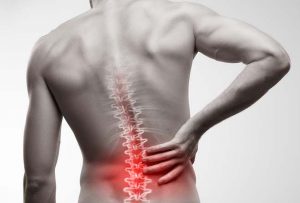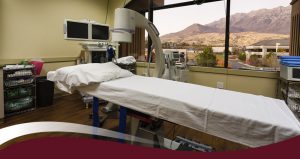Did you know that experts estimate that up to 80% of the population will experience back pain at some point in their lives?[1] Lower back pain is a common problem that severely impacts the quality of your life. It can limit your ability to be active. Back pain is one of the most common reasons for missing work.[2] An article in the Bone and Joint Initiative reads, “Back pain accounts for more than 264 million lost workdays in one year.”[3] It can cause you to miss out on other daily activities such as school, playing with your children or grandchildren, sports, and more. Lower back pain can involve just the back, or it can radiate down your legs and into your feet as well. Chronic lower back pain can be debilitating and disheartening. Keep reading for more information on common causes, symptoms, and treatments for back pain.
Common Causes of Lower Back Pain
It’s important to learn about the structure of the lumbar spine (the lower back region) to better understand your pain. In many cases, back pain is caused by muscle or ligament strains. This can happen if you spend a day doing heavy lifting. But back pain can also be caused by compression of the spinal nerves. Herniated discs or bone growths caused by osteoarthritis can press against the nerves. Fractures of the spine can reduce the amount of space around them.[4] This type of pain may not go away, even after weeks. Back pain can be also be hereditary – if one or both of your parents have back pain, you’re more likely to have back pain as well. Other causes include injuries, pregnancy, fractures, fibromyalgia, and degenerative disc disease.
About the Lumbar Spine
It’s important to learn about the structure of the lumbar spine (the lower back region) to better understand back pain. There are five lumbar vertebrae. Between these vertebrae are discs. They cushion the bones and allow the spine to bend and twist. The spine protects the spinal nerves. These travel through a space called the spinal canal. Branches of spinal nerves exit the spine through spaces on both sides of the spine.
Symptoms
Symptoms of back pain can vary depending on the cause of your pain and the severity of your injury. You may have trouble bending or twisting your back. It may be difficult to sit for long periods of time or sleep comfortably. You may feel a dull ache or a stabbing pain. The pain may radiate down to one or both legs. It may cause weakness, numbness or tingling. It can cause tingling, weakness, and/or numbness in your leg and foot.
Treatment
Some types of back pain are treated with over-the-counter medications and ointments. Many patients improve over time or with conservative treatment and do not require surgery. Conservative treatment may include over-the-counter medication, rest, reduction of physical activity, heat, ice, and physical therapy. If these methods are not effective, your healthcare provider may recommend prescription medications or injection therapy. You may also benefit from a lower back brace. This stabilizes your back and helps distribute your weight so there isn’t as much pressure on your lower back.
Exercising is a cheap and effective way to help manage chronic pain. It has been proven that exercising at least a few times a week can help decrease pain and improve function, mobility, and mood. At Spinal Interventions, we encourage our patients to take part in active rehabilitation programs including diet and daily exercise. Before starting any exercise programs, make sure to consult your physician about what the best plan is for you.
Spinal Interventions provides interventional pain management treatments for lower back pain with our primary emphasis on minimally invasive procedures. We perform these injections in our in-office suites, which contain C-arm fluoroscopy, lead-lined walls, and patient monitoring equipment. Our experienced physicians are board-certified in anesthesia and pain medicine. This allows patients to receive safe, appropriate sedation when needed. Injections in the lower back may include lumbar epidural steroid injections, nerve root blocks, facet injections and radiofrequency ablations, etc.
If these treatments do not help, you may benefit from surgery to correct a problem in your lumbar spine. Spinal Interventions works hard to provide patients with the best care possible. We understand that even with our treatments, we may not have the total solution. Therefore, we also work to coordinate patient care in conjunction with other specialists such as physiatrists, physical therapists, spine surgeons, rehabilitation facilities, and psychologists.
Don’t let chronic pain interfere with your life! Spinal Interventions has your back! If you’re dealing with chronic pain, you know how debilitating it can be. Don’t let pain keep you from doing the things you love. Take the first step to living pain free and call Spinal Interventions today at (801) 223-4860 for a consultation.
[1] Rubin Dl. Epidemiology and Risk Factors for Spine Pain. Neurol Clin. 2007; May;25(2):353-71.
[2] Vallfors B. Acute, Subacute and Chronic Low Back Pain: Clinical Symptoms, Absenteeism and Working Environment. Scan J Rehab Med Suppl1985; 11: 1-98.
[3] The Hidden Impact of Musculoskeletal Disorders on Americans, United State Bone and Joint Initiative, 2018.
[4] https://viewmedica.com/vm/index/brochure/6793/backpain/en




